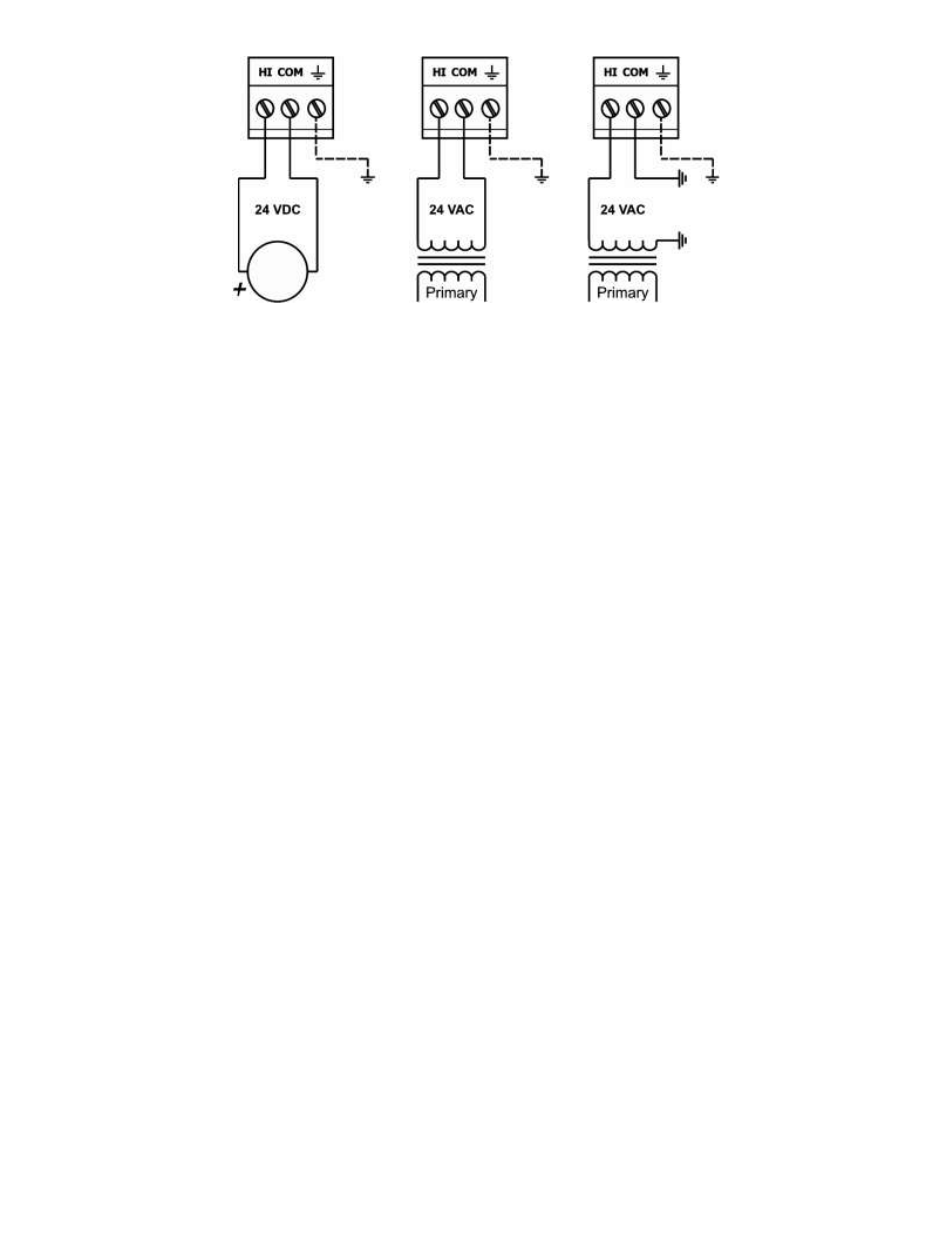1 power supply precautions, 2 limited power sources, Power supply precautions – Contemporary Control Systems BASremote User Manual (firmware 3.1.x) User Manual
Page 17: Limited power sources

TD040300-0MF
17
Figure 4
— Power Options
WARNING:
Powering devices can present hazards. Read the next two sections carefully.
4.1.1 Power Supply Precautions
Internally, the BAS Remote utilizes a half-wave rectifier and therefore can share the
same AC power source with other half-wave rectified devices. Sharing a common DC
power source is also possible. Sharing AC power with full-wave rectified devices is
NOT recommended. Full-wave rectified devices usually require a dedicated AC power
source that has a secondary elevated above ground. Both secondary connections are
considered HOT. AC power sources that power several half-wave devices have a
common secondary connection called COMMON, LO, or GROUND. This connection
might be tied to earth. The other side of the secondary is considered the HOT or HI
side of the connection. Connect the HOT side of the secondary to the HI input on the
BAS Remote and the LO side to COM on the BAS Remote. All other half-wave devices
sharing the same AC power source need to follow the same convention. When using a
DC power source, connect its positive terminal to the HI input on the BAS Remote and the
negative terminal to COM on the BAS Remote. Reversing polarity to the BAS Remote
will not damage the BAS Remote.
WARNING:
Devices powered from a common AC source could be damaged if a mix of
half-wave and full-wave rectified devices exist. If you are not sure of the type of rectifier
used by another device, do not share the AC source with it.
4.1.2 Limited Power Sources
The BAS Remote should be powered by a limited power source complying with the
requirements of the National Electric Code (NEC) article 725 or other international
codes meeting the same intent of limiting the amount of power of the source. Under
NEC article 725, a Class 2 circuit is that portion of the wiring system between the load
side of a Class 2 power source and the connected equipment. For AC or DC voltages
up to 30 volts, the power rating of a Class 2 power source is limited to 100 VA. The
transformer or power supply complying with the Class 2 rating must carry a
corresponding listing from a regulatory agency such as Underwriters Laboratories (UL).
